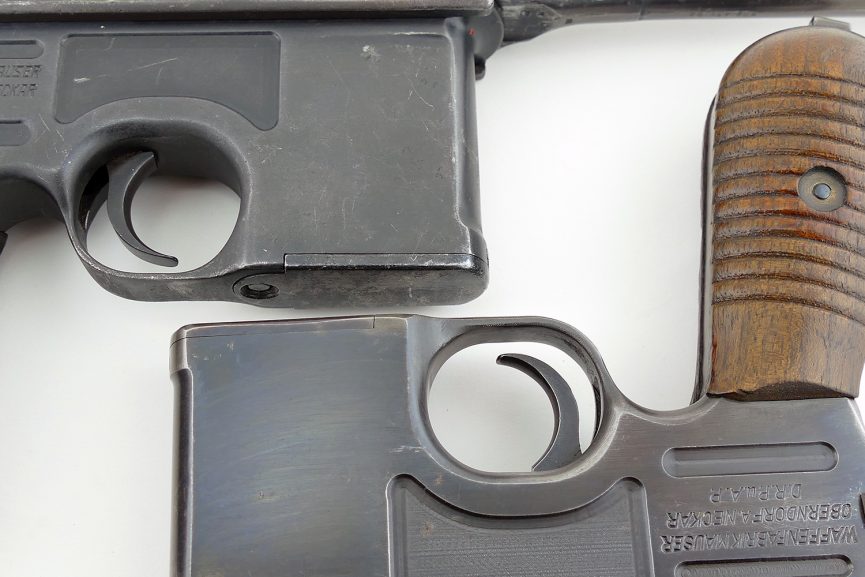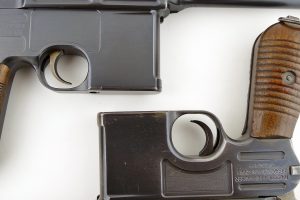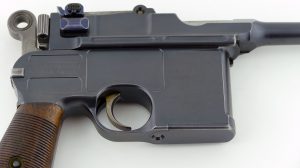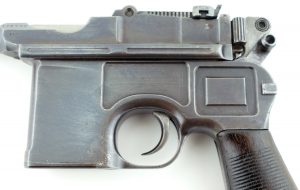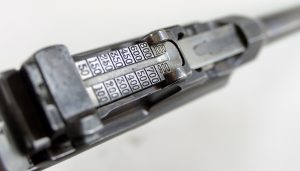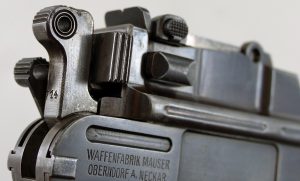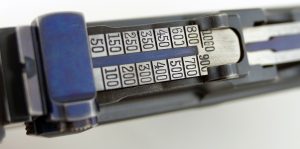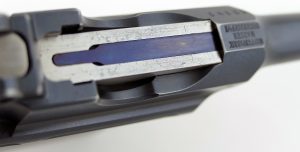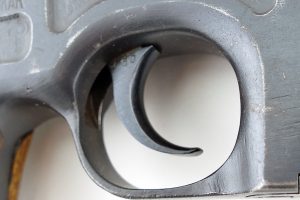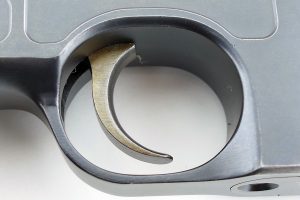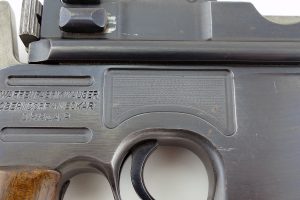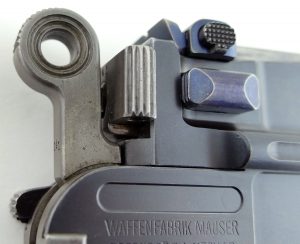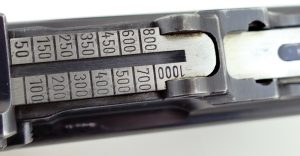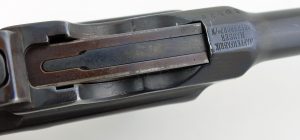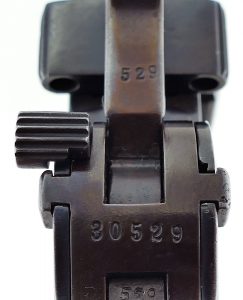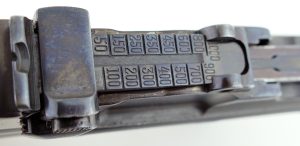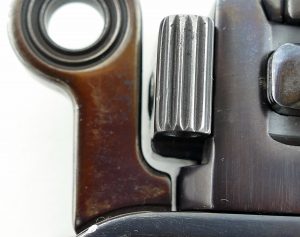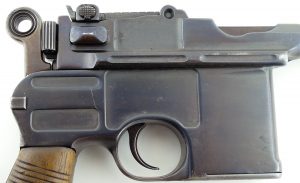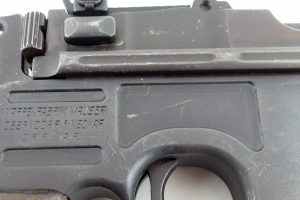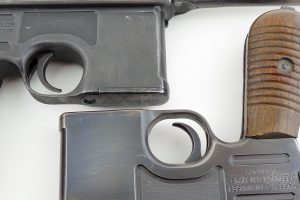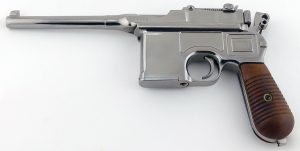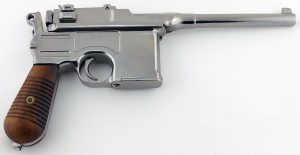Identifying a Refinished or Reblued Mauser C/96 Broomhandle
The Mauser C/96 Broomhandle pistol was manufactured between 1896 until about 1936, and over a million examples were made. In the subsequent years, a myriad of fates befell these pistols. A small handful survive in essentially new condition, while others have seen long years of hard service and barely function. Over time, many C/96 pistols were refinished – either by arsenals or private individuals. In this post, we’re going to examine some of the ways to tell if a C/96 has been refinished or otherwise tampered with. Keep in mind that this is just a guide, and that nothing can be a substitute for years of looking at C/96 pistols and being familiar with what looks right. These are just the basics for a beginner contemplating a purchase.
First, know what is the proper C/96 finish for a given time period. C/96 pistols got two different kinds of blue at the Mauser factory; a rust blue from the start of production until about the early 700,000 serial range, or a salt blue from the 700,000 range until the end of production. Rust blued guns have a blue/black matte finish, while salt blued guns have a shiny black finish.
- Example of a correct “rust blue” pistol
- Example of an incorrect, overly shiny reblue
- Polished (incorrect) rear sight, with complete loss of fire blue.
- Example of an incorrect hammer on a reblued gun, illustrating overpolishing of in the white parts.
Mauser further accentuated their guns using a fire blue finish on small parts until late production (in the 800,000 range). A fire blue is a deep iridescent blue on small parts such as the extractor, bolt stop trigger, and rear sight cursor. In late production guns these parts are salt blued like the rest of the gun, and will have the characteristic shiny black finish. Fire blue fades, and an original pistol can have totally faded fire blue. Look for evidence of polishing or overly shiny bolt or rear sight to tip you off that the gun may have been refinished.
- Example of a correct fire blued small parts. Note in the white rear sight and bolt.
- A correct fire blued extractor, showing how vivid original fire blue can be.
When Red 9 pistols were reworked in the late 1920’s and early 1930’s to comply with the treaty of Versailles, some of the small parts were salt blued rather than rust blued. It’s perfectly normal to find an arsenal reworked Red 9 with salt blued small parts, and is proper for this variant. Arsenal reworked Red 9 pistols are generally identified by their shortened barrel and 1920 stamp on the gun.
- Correct fire blued trigger (note: pictures make the fire blue look a bit black)
- Correct strawed trigger, note the gold toning to the metal. Sometimes this can fade to a silvery gold appearance.
- Correct salt blued trigger, showing the black appearance.
To further confuse the matter, Mauser left early triggers (from start of production until the 15,000 range) “in the white.” These triggers have no finish, and are a smooth shiny steel (not pictured in this article). Mauser then switched to a strawed from the 20,000 range until the late 100,000 range. Strawed triggers have a gold appearance, although this often wears off and will appear a more silvery gold.
- Example of a correct broomhandle hammer, as left “in the white” by the factory
- Example of a correct, unpolished rear sight “in the white” as it left the factory
When looking at bluing, remember that Mauser ALWAYS left the bolt, hammer, rear sight, and lock mechanism in the white, meaning that they will have no finish. They will generally appear a matte grey color, although sometimes they will oxidize darker. Either way, they will not have blue on them. Evidence of being polished, or being extremely shiny is a sure sign that the gun might have been refinished.
- Example of an incorrect bolt that has been refinished over the original “fire blue”
- An incorrect, reblued hammer and lock mechanism. These left the factory “in the white.”
- Example of an incorrect, reblued rear sight (a sure sign that the gun has been tampered with!).
- Example of an incorrect, “plum” reblued hammer (these left the factory “in the white”).
- Original factory blued gun on the left, with crisp edges and crisp, deep lettering on markings. The reblued gun on the right has rounded corners and fuzzy/shallow markings.
Also check the markings on a C/96 for overall crispness. Most reblued guns (even well reblued) will have a general fuzziness to markings, or have areas of pitting that the new coat of blue covers. Additionally, look the gun over for evidence of a plum color in the blue. Except for some very late production guns (the late 800,000-early 900,000 range), C/96 pistol should not have a plum color in their blue. Even the small number of Mauser guns that did turn plum have it limited to the upper portion of the gun.
Overly shiny blue is also a cause for concern. Rust blue on a C/96 is a matte color that does not overly reflect light. Shiny blue can mean that the gun was polished heavily before bluing and is reflecting a lot of light, something not seen in factory guns. Conversely, a salt blued gun will be a deep, shiny black, while refinished salt blued guns will most often be a dull black without much reflectivity. (This dull black finish is seen most often on guns imported from China, and given a refinish in Chinese arsenals.)
- An incorrect, reblued gun over pitting. Guns were often reblued to try and hide pitting from rust or poor storage.
- Typical dull refinish of an incorrect Salt Blued gun. Most of these finishes were applied in Chinese Arsenals.
- Example of an incorrect, Chinese dull refinish (top) contrasted with a correct, factory original Salt Blue (bottom).
Lastly, Mauser C/96 pistols were NEVER chromed or nickeled by the factory. We’ve seen several so called “Presentation” guns that have a shiny finish, and are just guns that someone decided would look good refinished as such. This was a common practice by US GIs in the immediate post WWII period who had a souvenir Luger or Broomhandle, and who wanted to make it a little more exciting. These are interesting guns and do have some value, but nowhere near what an original C/96 has, and contrary to the stories associated with them, they were not trophies for bravery or in any way sanctioned by the German military.
- Left side of an incorrect, refinished nickeled Broomhandle
- Right side of an incorrect, refinished nickeled Broomhandle
These are just general tips when contemplating a purchase, and are no substitute for experience or other expert opinion. Examine as many Broomhandles as you can, spot the subtle differences, and trust your instincts. Error on the side of caution, and you’ll minimize your chances of getting burnt!
Do you have an item like this one that you are interested in selling?
We purchase collectible firearms and military antiques every day at Pony Express Firearms – please contact us today if you would like to sell your item!

